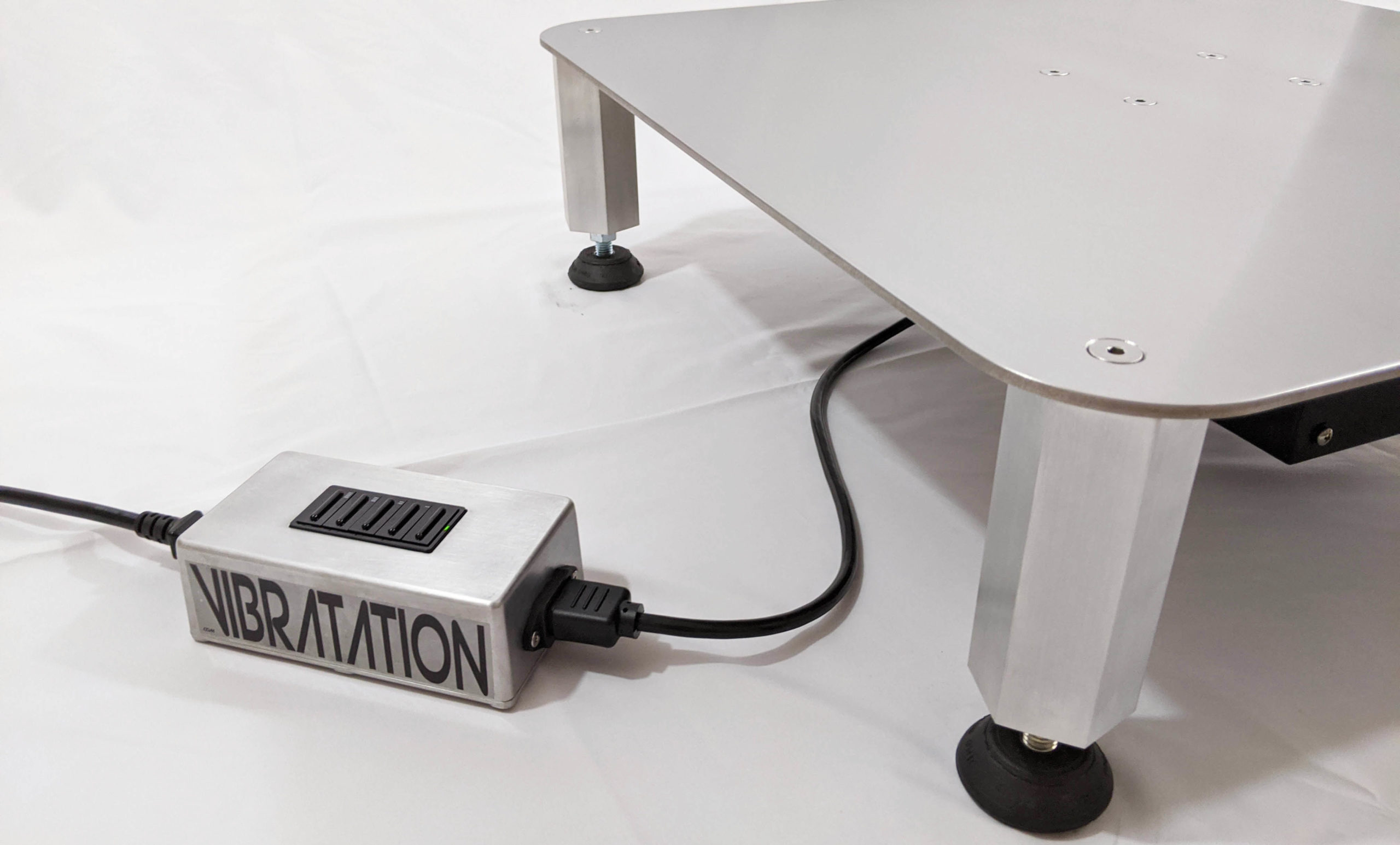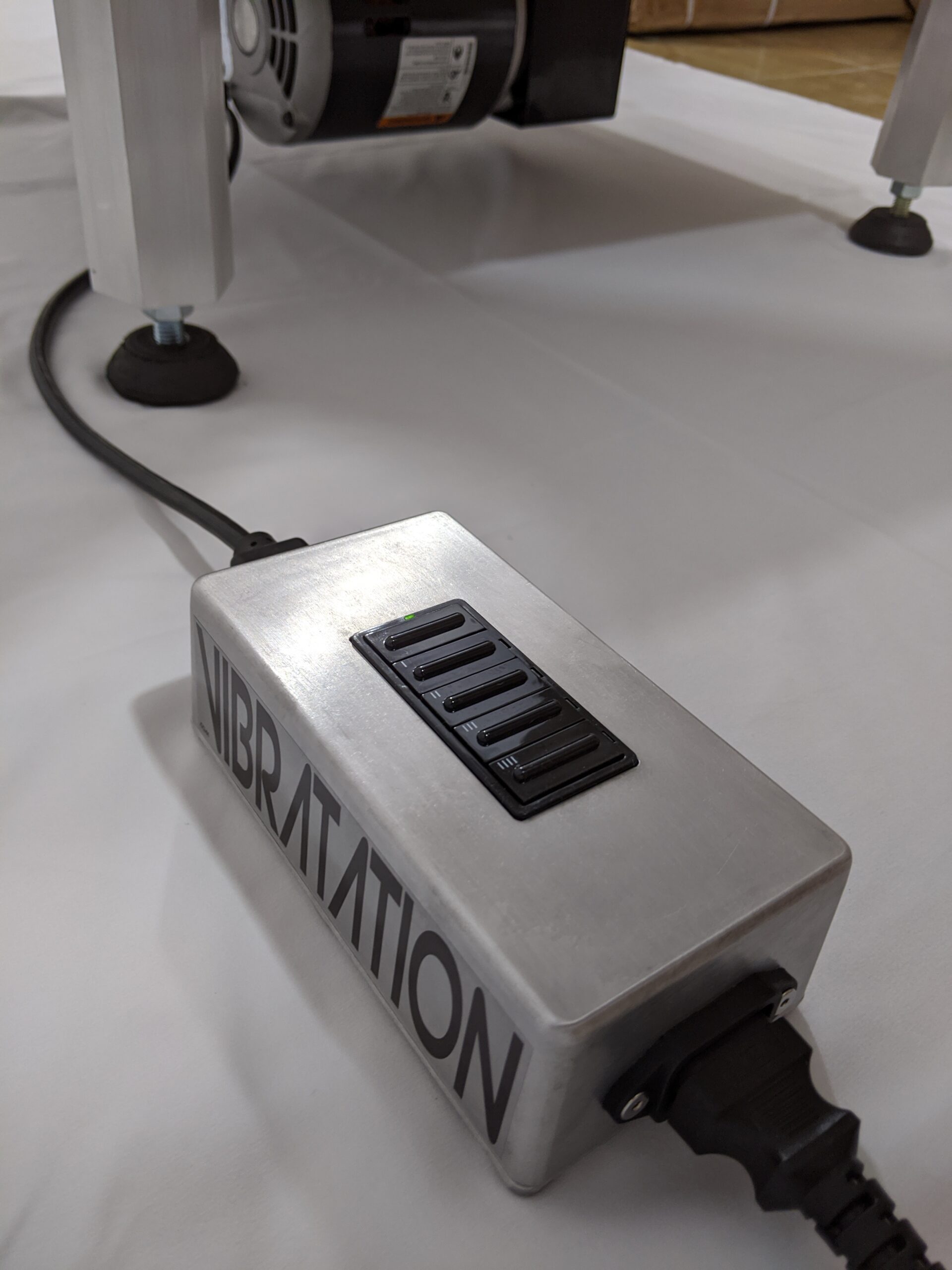
There are two types of Whole Body Vibration machines:
- Linear, vertical motion. Your body moves only slightly.
- Pivotal, rocking motion. Your legs and hips move a lot.
VIBRATATION is a linear machine. For linear WBV machines, amplitude is barely visible and horsepower is irrelevant:
- the motor is used to rotate a weight to produce vibration; basically a giant version of the gizmo that vibrates in your cell-phone. A higher-power motor will not increase vibration intensity, but will merely spin-up the vibrating weight faster. Even with a 200 watt motor, VIBRATATION spins up instantly. For completeness, the motor’s power rating is indirectly relevant: a lower-power motor will not be built as “heavy-duty” as a higher power motor. VIBRATATION uses an industrial tool motor (1/4-horsepower). A much lower-power motor could rotate the vibrating weight, but it would not be reliable under continuous operation for this intense vibration.
- motion amplitude will vary, depending on user’s weight relative to the polar inertia of the rotating weight that produces the vibration, also the weight of the platform is an important factor (as is the plate’s stiffness or flexibility, and then the math gets complicated).
- frequency is fixed. It’s set by the motor’s electrical construction, etc. Frequency is much higher than pivotal type machines.
Pivotal machines produce a tilting motion, making horsepower very important because the motor has to do more work to move your weight through a few inches:
- The motor is used to directly lift your weight through an inch or so. The more you weigh, and the further out you stand toward the edge of the see-saw platform, the more power is required to lift you upward at a given speed or frequency.
- motion amplitude is fixed, depending on where you stand on the pivoting platform. Further toward the edge of the see-saw, more movement.
- frequency will vary (speed of pivoting), depending on user’s weight relative to the motor’s power to continue turning at the same speed when you move your weight toward the limit of the platform, needing more effort from the motor.
SUMMARY
Linear method: mass of the rotating weight is important, frequency is high.
- Frequency is fixed.
Motion amplitude is not fixed, but is affected by your weight. - The “G’s” you feel are an effect of both displacement and speed. So when rotating speed is constant, but motion amplitude is reduced (with a heaver body on the machine), then overall “G” impact will be reduced.
Pivotal method: motor power is important, frequency is low.
- Motion amplitude is fixed.
Frequency is not fixed, but is affected by your weight. - The “G’s” you feel are an effect of both displacement and speed. So if motion amplitude is constant, but speed is reduced, then overall “G” impact will be reduced. Because of excessive amplitude, the frequency of pivotal machines must be much lower than what Linear machines can safely operate. Therefore the frequency-dependent biomechanical effects of whole body vibration are limited or unreachable through a “pivotal type” design.
